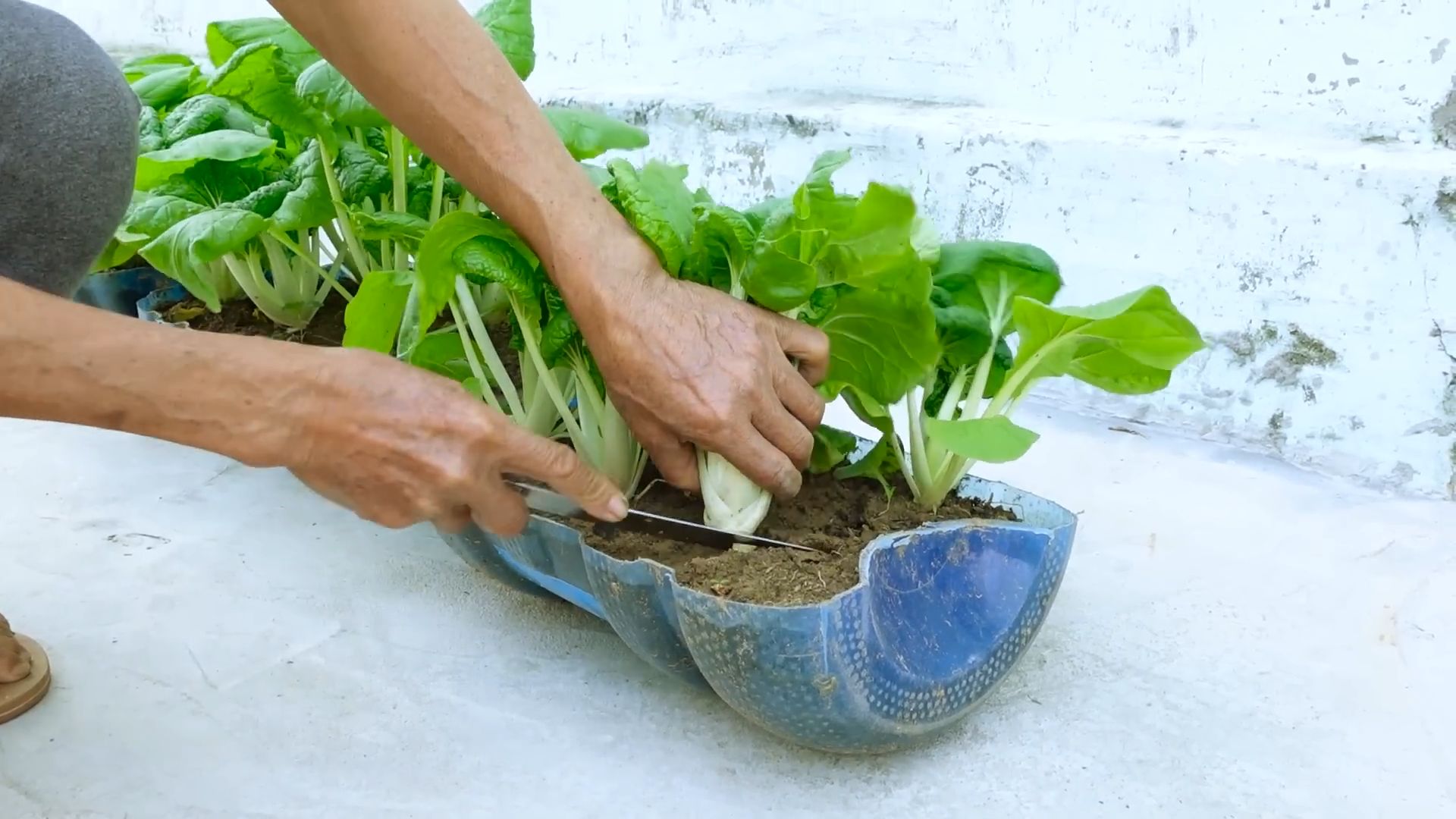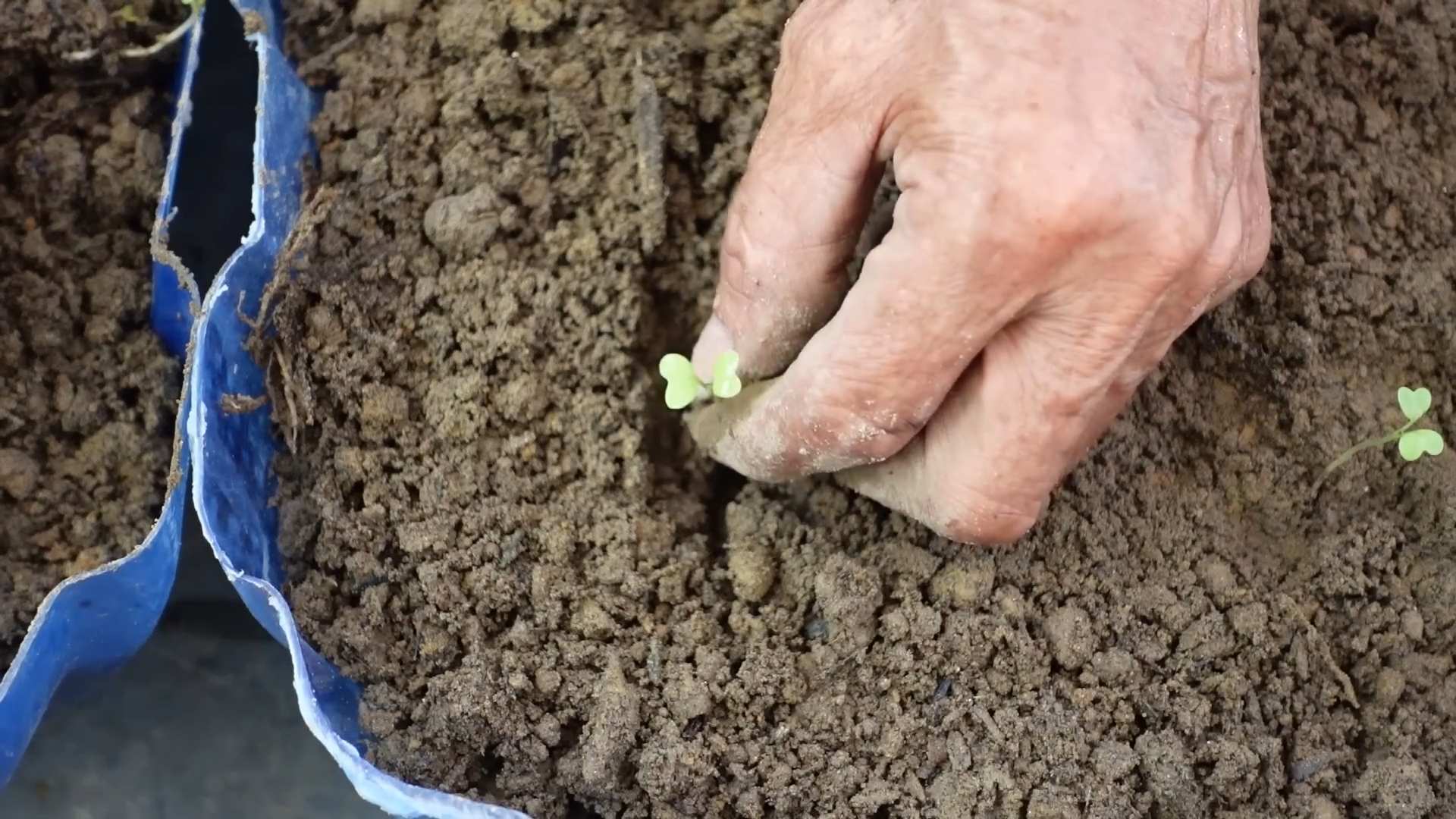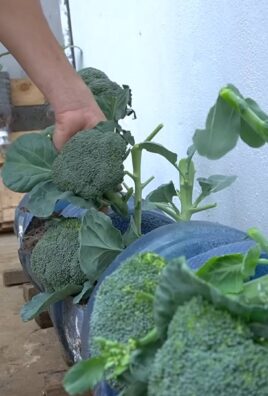Home Bok Choy Planting: Ever dreamed of stepping into your backyard and harvesting fresh, crisp Bok Choy for a delicious stir-fry? I know I have! It’s easier than you think, and this DIY guide will unlock the secrets to successful home Bok Choy planting, even if you’re a complete beginner. Forget those bland, store-bought greens – imagine the vibrant flavor of homegrown Bok Choy gracing your table.
Bok Choy, also known as Chinese cabbage, has a rich history deeply rooted in Asian cuisine. Cultivated for centuries, it’s a staple ingredient celebrated for its nutritional value and versatility. From stir-fries to soups, its mild, slightly sweet flavor adds a delightful touch to countless dishes. But why rely on grocery stores when you can cultivate your own supply right at home?
In today’s world, where we’re increasingly conscious of what we eat and where it comes from, home Bok Choy planting offers a fantastic solution. You’ll have complete control over the growing process, ensuring your Bok Choy is free from harmful pesticides and packed with nutrients. Plus, there’s nothing quite like the satisfaction of nurturing a plant from seed to harvest. This DIY guide will provide you with simple, effective tricks and hacks to overcome common challenges and enjoy a bountiful harvest of delicious Bok Choy. Let’s get started!

Grow Your Own Delicious Bok Choy at Home: A Beginner’s Guide
Hey there, fellow gardening enthusiasts! I’m so excited to share my experience with growing bok choy at home. It’s surprisingly easy, even if you’re a complete newbie like I was not too long ago. Bok choy, also known as pak choi, is a nutritious and versatile leafy green that adds a delightful crunch to stir-fries, soups, and salads. Plus, nothing beats the satisfaction of harvesting your own fresh produce!
Choosing Your Bok Choy Variety
Before we dive into the planting process, let’s talk about bok choy varieties. There are several options available, each with slightly different characteristics. Here are a few popular choices:
* Shanghai Bok Choy: This variety has light green stems and spoon-shaped leaves. It’s known for its mild flavor and tender texture.
* Baby Bok Choy: As the name suggests, this is a smaller version of regular bok choy. It’s perfect for single servings and has a delicate flavor.
* Mei Qing Choi: This variety features vibrant green leaves and thick, juicy stems. It’s known for its crisp texture and slightly sweet flavor.
* Joi Choi: A larger variety with dark green leaves and broad, white stems. It’s heat-tolerant and slow to bolt (go to seed).
I personally love growing Shanghai Bok Choy because of its mild flavor and quick growth. But feel free to experiment and find the variety that suits your taste and climate best!
Getting Started: What You’ll Need
Okay, let’s gather our supplies! Here’s a list of everything you’ll need to grow bok choy at home:
* Bok Choy Seeds: Choose a variety that you like and purchase seeds from a reputable source.
* Seed Starting Trays or Small Pots: These are optional, but I highly recommend starting your seeds indoors for better control over the growing environment.
* Seed Starting Mix: A lightweight, sterile mix that’s specifically designed for starting seeds.
* Potting Soil: A well-draining potting mix for transplanting your seedlings into larger containers or directly into the garden.
* Gardening Gloves: To protect your hands from dirt and potential irritants.
* Watering Can or Hose: For watering your plants regularly.
* Fertilizer: A balanced fertilizer to provide your bok choy with essential nutrients. I prefer using an organic fertilizer.
* Garden Trowel: For transplanting seedlings and working the soil.
* Optional: Row Covers or Insect Netting: To protect your plants from pests.
Step-by-Step Planting Guide
Alright, let’s get our hands dirty! Here’s a detailed guide to planting bok choy, whether you’re starting from seeds indoors or directly sowing them in the garden.
Starting Seeds Indoors (Optional but Recommended)
Starting seeds indoors gives your bok choy a head start, especially if you live in an area with a short growing season.
1. Prepare Your Seed Starting Trays: Fill your seed starting trays or small pots with seed starting mix. Gently press the mix down to create a firm surface.
2. Sow the Seeds: Sow 2-3 bok choy seeds per cell or pot, about ¼ inch deep.
3. Water Gently: Water the seed starting mix gently using a watering can or spray bottle. Avoid overwatering, as this can lead to damping-off disease.
4. Provide Warmth and Light: Place the seed starting trays in a warm location (around 70-75°F) with plenty of bright, indirect light. You can use a heat mat to speed up germination. If you don’t have enough natural light, consider using a grow light.
5. Keep the Soil Moist: Keep the seed starting mix consistently moist, but not soggy. Water when the top inch of soil feels dry to the touch.
6. Thin the Seedlings: Once the seedlings have developed their first true leaves (the second set of leaves), thin them to one seedling per cell or pot. Choose the strongest and healthiest-looking seedling and snip off the others at the soil line.
Direct Sowing in the Garden
If you live in an area with a mild climate, you can directly sow bok choy seeds in the garden.
1. Prepare the Soil: Choose a location in your garden that receives at least 4-6 hours of sunlight per day. Bok choy prefers well-drained soil that is rich in organic matter. Amend the soil with compost or other organic matter to improve its fertility and drainage.
2. Sow the Seeds: Sow the bok choy seeds directly into the soil, about ¼ inch deep and 1-2 inches apart.
3. Water Gently: Water the soil gently using a watering can or hose.
4. Keep the Soil Moist: Keep the soil consistently moist until the seeds germinate.
5. Thin the Seedlings: Once the seedlings have developed their first true leaves, thin them to 6-8 inches apart.
Transplanting Seedlings
If you started your seeds indoors, you’ll need to transplant them into larger containers or directly into the garden.
1. Harden Off the Seedlings: Before transplanting, you’ll need to harden off the seedlings to acclimate them to outdoor conditions. This involves gradually exposing them to sunlight and cooler temperatures over a period of 7-10 days. Start by placing the seedlings outdoors in a sheltered location for a few hours each day, gradually increasing the amount of time they spend outdoors.
2. Prepare the Planting Site: Choose a location in your garden that receives at least 4-6 hours of sunlight per day. Bok choy prefers well-drained soil that is rich in organic matter.
3. Dig Holes: Dig holes that are slightly larger than the root balls of the seedlings.
4. Transplant the Seedlings: Gently remove the seedlings from their containers and place them in the holes. Make sure the top of the root ball is level with the surrounding soil.
5. Fill the Holes: Fill the holes with potting soil and gently press down to secure the seedlings.
6. Water Thoroughly: Water the seedlings thoroughly after transplanting.
Caring for Your Bok Choy Plants
Now that your bok choy plants are in the ground, it’s time to provide them with the care they need to thrive.
* Watering: Bok choy needs consistent moisture to grow well. Water your plants regularly, especially during hot, dry weather. Aim to keep the soil consistently moist, but not soggy.
* Fertilizing: Bok choy is a heavy feeder, so it’s important to fertilize your plants regularly. Use a balanced fertilizer according to the package directions. I like to use an organic fertilizer every few weeks.
* Weeding: Keep the area around your bok choy plants free of weeds. Weeds compete with bok choy for nutrients and water.
* Pest Control: Bok choy can be susceptible to pests such as aphids, cabbage worms, and flea beetles. Inspect your plants regularly for signs of pests and take action to control them if necessary. You can use insecticidal soap, neem oil, or row covers to protect your plants.
* Bolting: Bok choy is prone to bolting (going to seed) in hot weather. To prevent bolting, plant your bok choy in the spring or fall, and provide it with plenty of water and shade during hot weather. Choose bolt-resistant varieties like Joi Choi.
Harvesting Your Bok Choy
The best part of growing bok choy is harvesting your own fresh produce! You can harvest bok choy at any stage of growth, depending on your preference.
* Baby Bok Choy: Harvest baby bok choy when the leaves are about 4-6 inches long.
* Mature Bok Choy: Harvest mature bok choy when the heads are about 8-12 inches tall.
To harvest bok choy, simply cut the entire head off at the base of the plant using a sharp knife. You can also harvest individual leaves as needed.
Enjoying Your Homegrown Bok Choy
Congratulations! You’ve successfully grown your own bok choy at home. Now it’s time to enjoy the fruits (or rather, vegetables) of your labor. Bok choy is a versatile ingredient that can be used in a variety of dishes. Here are a few ideas:
* Stir-fries: Add bok choy to your favorite stir-fry recipes for a crunchy and nutritious boost.
* Soups: Bok choy adds a mild flavor and tender texture to soups.
* Salads: Use baby bok choy in salads for a delicate flavor and crisp texture.
* Steamed or Sautéed: Simply steam or sauté bok choy with a little garlic and ginger for

Conclusion
So, there you have it! Mastering the art of home bok choy planting is not only achievable but also incredibly rewarding. Forget those wilted, overpriced heads at the grocery store. Imagine stepping into your garden or onto your balcony and harvesting crisp, vibrant bok choy whenever you need it. The difference in flavor and freshness is simply unparalleled.
This DIY approach empowers you to control every aspect of your bok choy’s growth, from the quality of the soil to the amount of sunlight it receives. You’ll avoid harmful pesticides and herbicides, ensuring a healthy and delicious addition to your meals. Plus, there’s a certain satisfaction that comes from nurturing something from seed to table. It’s a connection to nature that’s both grounding and fulfilling.
But the benefits don’t stop there. Growing your own bok choy is also a fantastic way to reduce your carbon footprint. Think about all the transportation and packaging involved in getting commercially grown produce to your local supermarket. By growing your own, you’re minimizing your environmental impact and contributing to a more sustainable lifestyle.
Feeling adventurous? Why not experiment with different varieties of bok choy? From the classic Shanghai bok choy with its pale green stalks to the vibrant purple bok choy, there’s a whole world of flavors and textures to explore. You can also try companion planting to enhance growth and deter pests. Marigolds, for example, are known to repel nematodes and other unwanted visitors.
Consider succession planting to ensure a continuous harvest throughout the growing season. Sow new seeds every few weeks, and you’ll always have fresh bok choy on hand. You can also adjust your planting schedule to accommodate different climates and growing conditions. If you live in a colder region, start your seeds indoors a few weeks before the last frost.
Don’t be afraid to get your hands dirty and experiment. Gardening is a learning process, and there’s no better way to learn than by doing. Embrace the challenges, celebrate the successes, and most importantly, have fun!
We’re confident that you’ll find home bok choy planting to be a worthwhile and enjoyable experience. So, grab your seeds, prepare your soil, and get ready to embark on a culinary adventure. We encourage you to try this DIY trick and share your experiences with us. Let us know what varieties you’re growing, what challenges you’ve faced, and what tips you’ve discovered along the way. Together, we can create a community of bok choy enthusiasts and inspire others to embrace the joys of home gardening. Share your photos and stories on our social media channels using #HomeBokChoy and let’s grow together!
Frequently Asked Questions (FAQ)
What is the best time of year to plant bok choy at home?
The best time to plant bok choy depends on your climate. Bok choy is a cool-season crop, so it thrives in temperatures between 55°F and 70°F (13°C and 21°C). In most regions, you can plant bok choy in early spring or late summer/early fall. Avoid planting during the hottest months of summer, as high temperatures can cause bolting (premature flowering), which will make the leaves bitter. If you live in a warmer climate, you can grow bok choy throughout the winter.
What kind of soil is best for growing bok choy?
Bok choy prefers well-drained, fertile soil with a pH between 6.0 and 7.5. Amend your soil with compost or other organic matter to improve drainage and fertility. If your soil is heavy clay, consider growing bok choy in raised beds or containers. A good soil mix should retain moisture but not become waterlogged. You can also add a slow-release fertilizer at planting time to provide essential nutrients.
How much sunlight does bok choy need?
Bok choy needs at least 4-6 hours of sunlight per day. However, it can tolerate partial shade, especially in warmer climates. If you’re growing bok choy indoors, provide supplemental lighting with grow lights. Insufficient sunlight can lead to leggy growth and reduced yields. Monitor your plants closely and adjust their position as needed to ensure they’re getting enough light.
How often should I water bok choy?
Bok choy needs consistent moisture to thrive. Water deeply whenever the top inch of soil feels dry to the touch. Avoid overwatering, as this can lead to root rot. Mulching around your plants can help retain moisture and suppress weeds. During hot, dry weather, you may need to water more frequently. Use a soaker hose or drip irrigation to deliver water directly to the roots.
What are some common pests and diseases that affect bok choy?
Common pests that affect bok choy include aphids, flea beetles, cabbage worms, and slugs. You can control these pests with organic methods such as handpicking, insecticidal soap, or Bacillus thuringiensis (Bt). Common diseases include downy mildew, clubroot, and black rot. Prevent these diseases by practicing crop rotation, ensuring good air circulation, and avoiding overhead watering. If you notice signs of disease, remove affected leaves immediately and treat with an appropriate fungicide.
How do I harvest bok choy?
You can harvest bok choy at any stage of growth, depending on your preference. For baby bok choy, harvest when the leaves are about 4-6 inches long. For mature bok choy, harvest when the heads are firm and compact. You can harvest the entire head at once or harvest individual leaves as needed. To harvest the entire head, cut it off at the base with a sharp knife. To harvest individual leaves, simply snap them off from the outer edges of the plant.
Can I grow bok choy in containers?
Yes, bok choy grows well in containers. Choose a container that is at least 8-12 inches deep and wide. Use a well-draining potting mix and provide adequate sunlight and water. Container-grown bok choy may need more frequent watering and fertilization than bok choy grown in the ground. Be sure to monitor the soil moisture and nutrient levels regularly.
How do I prevent bok choy from bolting?
Bolting is a common problem with bok choy, especially in hot weather. To prevent bolting, choose bolt-resistant varieties, plant in early spring or late summer/early fall, and provide shade during the hottest part of the day. Consistent watering and fertilization can also help prevent bolting. If your bok choy starts to bolt, harvest it immediately to prevent the leaves from becoming bitter.
How can I use bok choy in my cooking?
Bok choy is a versatile vegetable that can be used in a variety of dishes. It can be stir-fried, steamed, boiled, or added to soups and stews. The leaves and stalks are both edible. Bok choy pairs well with garlic, ginger, soy sauce, and sesame oil. It’s also a good source of vitamins A and C, as well as fiber. Experiment with different recipes and find your favorite ways to enjoy this delicious and nutritious vegetable.
What are some good companion plants for bok choy?
Good companion plants for bok choy include:
* **Marigolds:** Repel nematodes and other pests.
* **Nasturtiums:** Attract aphids away from bok choy.
* **Garlic:** Deters pests and improves soil health.
* **Onions:** Repel pests and improve soil health.
* **Dill:** Attracts beneficial insects.
* **Chamomile:** Attracts beneficial insects and improves soil health.
Avoid planting bok choy near members of the brassica family (e.g., broccoli, cabbage, cauliflower), as they can attract the same pests and diseases.





Leave a Comment